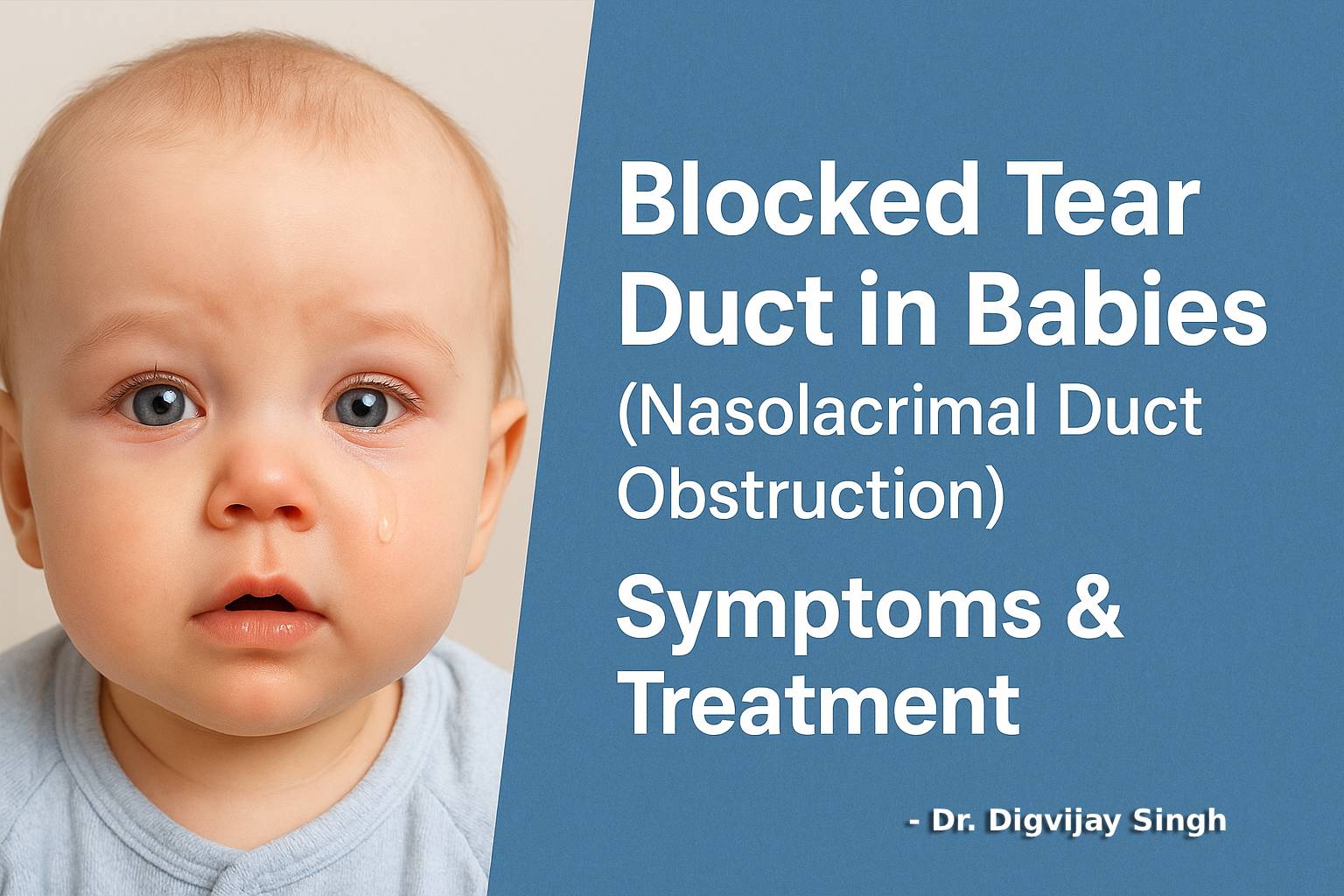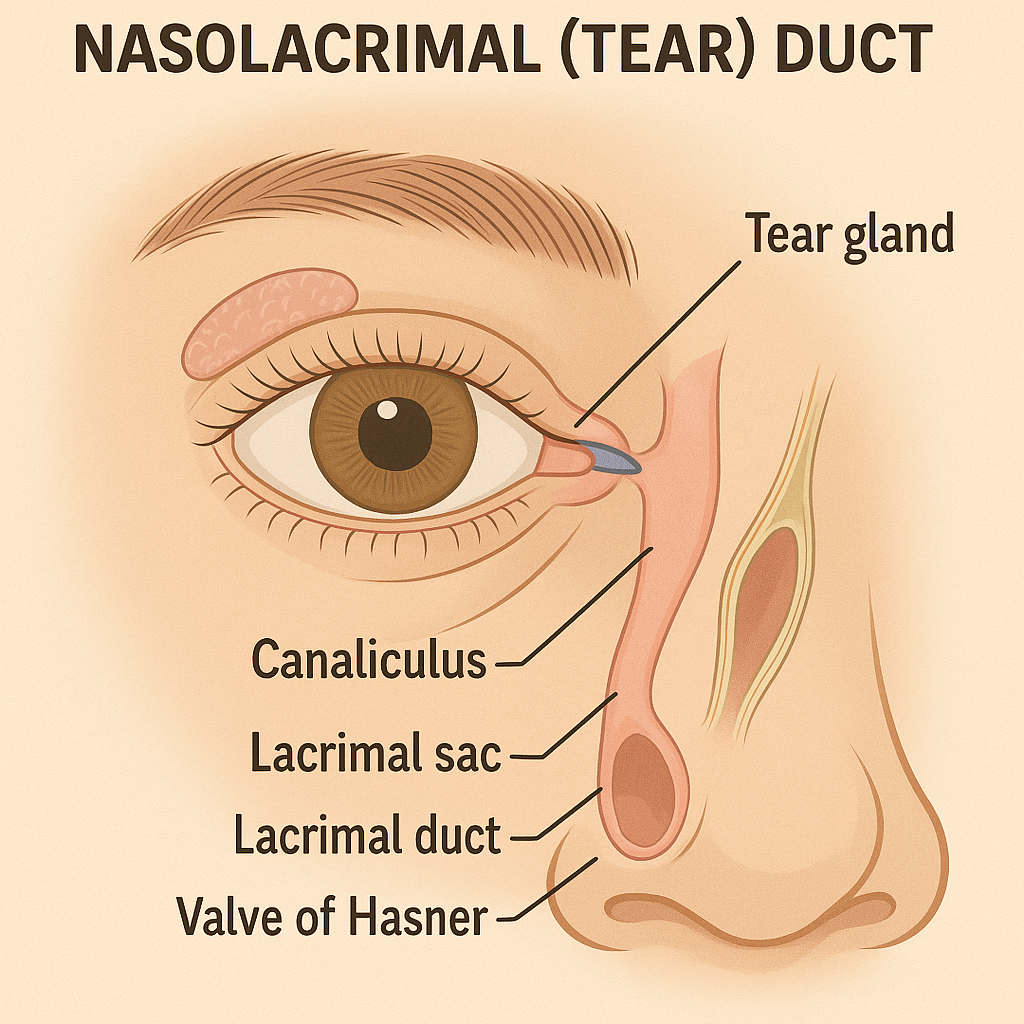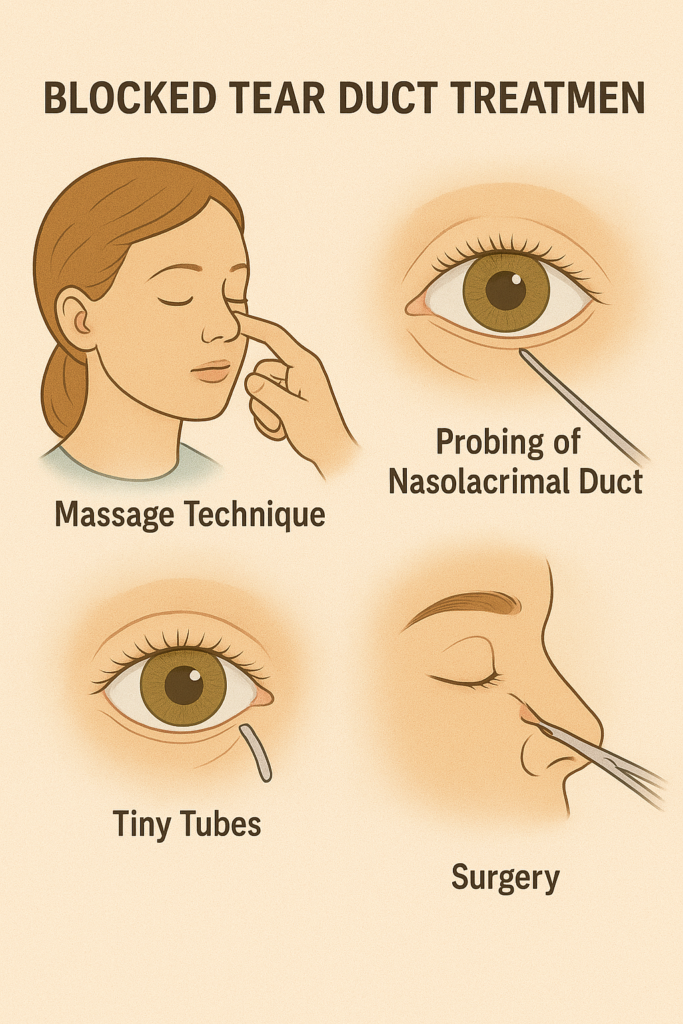Parents usually get worried when their baby’s eyes are continuously watery or sticky. You clean it, and it just comes back again. It’s easy to think it’s an allergy or an infection, but sometimes it’s something simpler, a blocked tear duct. It's one of those things that often goes unnoticed until it starts making everyday life uncomfortable for the child. Let’s understand this with no confusion. Just a perfect guide about what nasolacrimal duct obstruction means, why it happens, and what can be done if your child has it.
Table of Contents |
What’s the Nasolacrimal Duct?
There’s a tiny tunnel inside the face called the nasolacrimal duct. Its job is pretty boring but important. It drains tears from your eyes down into your nose. That’s why your nose runs when you cry. Every time we blink, the tears travel from small openings in the corner of the eye, called the punctum eye, into the lacrimal sac. From there, they flow down the duct into the nose.
In babies, this duct isn’t always open at birth. If it stays blocked, it causes watery eyes or sticky discharge. That’s when we start talking about nasolacrimal duct obstruction.
So, What Causes It?
In most cases, the cause is nothing you did wrong. Some babies are just born with a duct that hasn’t opened yet. It's as simple as that. It usually clears up in the first few months, but if it doesn’t, it can turn into a bit of a mess.
Here’s what might be going on:
- The duct didn’t open completely at birth.
- The eye tubes are too narrow or slightly malformed.
- Rarely, infections or injuries can block it later.
- Some kids have facial structures that make them more likely to have it.
This isn’t dangerous in most cases. But if left untreated, it can get annoying and sometimes painful for the child.
What You Might Notice: Blocked Tear Duct Symptoms
Let’s talk signs. You’ll usually notice symptoms within the first few weeks of life. Nothing scary, but it can get messy.
- Tears that don’t seem to stop
- Constant wetness under the eyes, even when not crying
- Crusty or sticky lashes, mostly in the morning
- White or yellow discharge near the inner corner
- A slightly swollen or red area next to the nose
- Sometimes, skin irritation just below the eyes
If things go south, the baby might develop dacryocystitis signs and symptoms like swelling in the corner of the eye or even pus.
When Should You Do Something?
Most babies with this condition get better on their own. But if nothing improves after 6 months, it’s best to check in with an eye specialist. If there’s too much discharge, swelling, or the baby seems in pain, don’t wait. An infected tear duct isn’t something to ignore.
How Is It Diagnosed?
The diagnosis part is simple. An eye doctor usually presses on the area over the lacrimal sac. If fluid or gunk comes out, that confirms a blocked duct. No big tests needed.
Sometimes, dye tests are done to see if the tears are draining properly. Scans or other imaging are rarely needed unless there are complications or infections happening repeatedly.
Blocked Tear Duct Treatment: What Can Be Done?
The right treatment depends on how old the child is and how severe the blockage is. A lot of babies just need time and care. But when that doesn’t help, there are a few ways to handle it.
1. Massage Technique
It’s called the Crigler technique. Nothing high-tech here. You just gently massage over the corner of the eye where the lacrimal sac is. The goal is to put pressure on the duct and try to open it. You’ll usually be shown how to do it. It has to be done daily and consistently for it to work.
2. Probing of Nasolacrimal Duct
Now, if things still don’t clear by the time the baby turns one, this option comes in. It’s a simple outpatient procedure. A thin, sterile probe is passed through the punctum eye into the duct to open it up. Takes just a few minutes and works well for most kids.
3. Tiny Tubes
If probing doesn’t fix it or the duct blocks again, silicone tubes may be placed to keep the duct open. These tubes stay in for a few months and are removed later.
4. Surgery (Only if Needed)
It’s rare in babies but sometimes needed for older kids. If the blockage keeps coming back or there are infections, a surgical route may be discussed. One of them is called DCR (dacryocystorhinostomy), done only in persistent cases.
What If You Do Nothing?
You could wait, sure. But if the duct stays blocked long enough, the child could end up with repeated infections. A chronically blocked duct might swell up and cause visible puffiness near the nose. And honestly, no parent wants to see their kid suffer when the fix is usually easy.
Dacryocystitis: The Infected Side of Things
This one needs special attention. If the lacrimal sac becomes infected, it turns into a condition called dacryocystitis. You’ll notice swelling, pain, redness, and possibly pus. It can spread fast and needs antibiotic treatment quickly. Sometimes, a minor surgical drainage may be needed if the infection doesn’t settle.
Final Words
Most blocked tear ducts in babies are not a major thing to panic about. A bit of patience and some regular massage on a daily basis can go a long way. But if things don’t improve or start getting worse, it’s time to step in. Don’t wait until the symptoms bother your child. Early treatment can avoid a lot of future trouble.
If you’re unsure or worried about your child’s symptoms, visit Noble Eye Care for a proper evaluation. Their pediatric specialists will guide you through it all; gently, clearly, and with the right care your child deserves.



![DigvijayProfile[1]](https://drdigvijaysingh.com/wp-content/uploads/2017/11/DigvijayProfile1.jpg)

Recent Comments